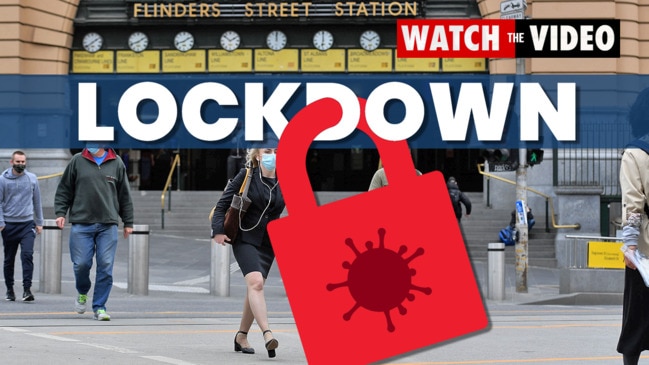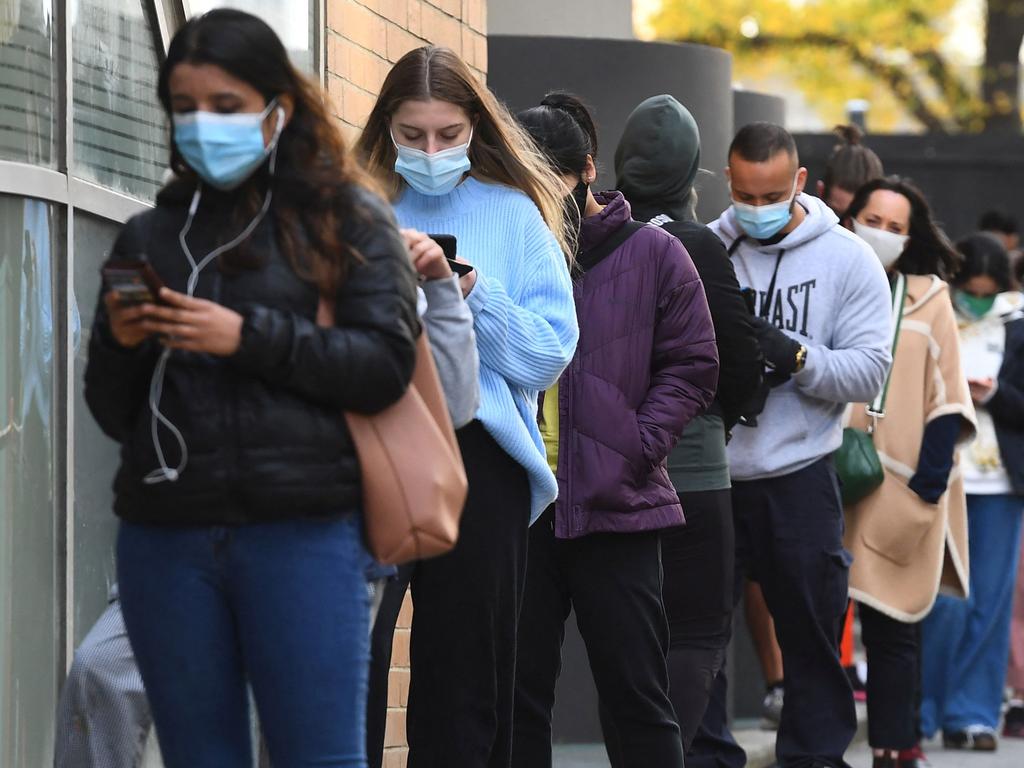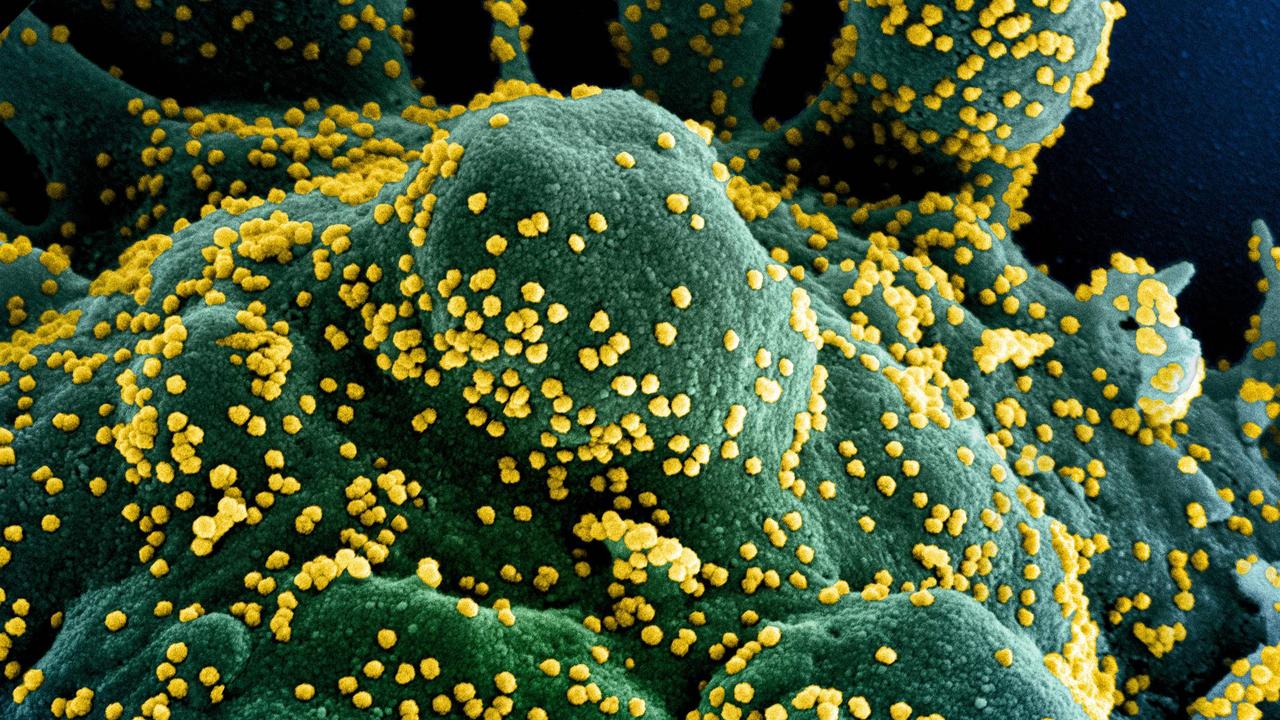Victoria ‘primed’ for a brutal third wave
Victorians are nervously waiting to see what the next few days bring, with officials concerned two alarming factors could see cases surge.

As Victorians enter their first day under new lockdown restrictions many are nervously waiting to hear how many new Covid-19 cases are recorded in the next few days, with officials concerned two alarming factors could see infections surge.
On Thursday, the state’s coronavirus cluster rose to 26 after 11 new infections were discovered, prompting the government to announce a seven-day “circuit breaker” lockdown for the entire state.
On Friday, cases rose again, with 4 new infections recorded.
Acting Premier James Merlino warned the outbreak would become “increasingly uncontrollable” unless authorities did something “drastic” to stop it, hence the seven-day lockdown.
Infectious disease expert Dr Michelle Ananda-Rajah warned the state could experience a “third wave” of Covid-19 infections if the situation isn’t brought under control quickly.
“We have been here before. I think the stakes are higher this time because we have all the factors for what is essentially a perfect storm,” Dr Ananda-Rajah told ABC’s News Breakfast on Friday.
“We have a largely unvaccinated population, we have winter approaching and we have an unforgiving variant on the loose at the moment.
“Victoria is primed at the moment for a third wave and we need to do everything possible to prevent that from happening.”
RELATED: NSW on high alert as virus spreads

Why this cluster is different from previous outbreaks
There are two main factors in this outbreak that has health officials particularly concerned, with one being the rapid rate of infection.
All of the cases in this cluster have been identified as the B.1.617 variant, commonly known as the Indian strain of the virus.
This variant is considered one of the more infectious strains we have seen emerge in this pandemic and has quickly made its way into dozens of countries, spreading at a dizzying rate.
Mr Merlino said that state has never experienced an outbreak of a strain that spreads this easily, saying the time between catching the virus and passing it on “is tighter than ever”.
“Our contact tracers are identifying and locking down the first ring, second ring, and third ring within 24 hours. They have never done that before,” he said.
“That’s the fastest our contact tracers have ever moved within a 24-hour period, identifying and locking down first, second, and third rings of cases. But despite working as fast as this, and my thanks to all of our contact tracers, this variant is moving faster still.”

Contact tracers have identified more than 10,000 primary and secondary contacts of known Covid-19 cases in the state, with chief health officer Professor Brett Sutton warning “any one of them could become cases over the next 14 days”.
He said the reason for the high number of primary contacts is because of the “generations of transmissions” which occurred before the first case in the outbreak was identified.
“There’s been opportunities to spread to people. The other clear element is the infectiousness of the virus. When we see a member become infected, almost all the household is infected,” he said.
“It speaks to the infectiousness of this B. 1.617 variant, but also the cycles it’s going through. It really is rapid and that’s led to the exponential increase.”
Another factor causing particular concern is the growing list of exposure sites and the kind of venues and businesses that are being identified.
There are now more than 150 exposure sites spread across Victoria, with many of the venues bars, pubs and clubs where people are indoors in close proximity to one another.
“If people look at the exposure sites and reflect on the fact that if they are crowded and if exertion or singing, dancing, chanting happens there – they will be high-risk,” Professor Sutton said.
“The length of time a case has been that will increase the risk. Gyms, we know, are a risk and there are gyms listed in the recent exposure sites.”
The spread in workplaces is also a concern, with one of the recent cases in Port Melbourne spreading the virus to at least five colleagues, before also attending a number of high-risk venues while infectious.
“That young man who had been to loads and loads of busy, indoor settings – clubs and pubs and restaurants – they are high at risk,” Professor Sutton said.
“Indoors, without a mask and exerting yourself – shutting, singing – these are high-risk activities and we need to watch them closely.”
List of Victoria’s lockdown restrictions
Victoria’s lockdown kicked in at 11.59pm on Thursday, with residents given just five reasons to leave the home, including getting food and supplies, authorised work, care and caregiving, exercise for up to two hours each day with one other person, and getting vaccinated.
The “circuit breaker” lockdown will be in place until 11.59pm on June 3, with the following restrictions also coming into effect:
• You must stay within 5km of your home for shopping and exercise. This limit does not apply to authorised work, when giving or receiving care, getting a COVID-19 vaccination or visiting an intimate partner or your single social bubble buddy.
• Face masks must be worn indoors and outdoors whenever you leave your home.
• There are to be no visitors to your home unless it is an intimate partner. However, single bubbles will be permitted, with people living alone allowed to make a bubble with one other person.
• Public gatherings are banned.
• Restaurants, pubs and cafes can provide takeaway only. Essential retail, supermarkets, food stores, petrol stations, banks, bottle shops and pharmacies, other retail stores can provide click and collect.
• Schools will move to remote learning, except for vulnerable children and children of authorised workers. Higher education will also move to remote learning.
• Childcare will remain open.
• Funerals will be limited to a maximum of 10 people plus those running the service.
• Weddings cannot proceed unless end of life or deportation reasons apply.
• Religious activities will not proceed other than through broadcast with a maximum of five people.
• Approved professional sporting events will proceed but crowds will not be permitted.
• Hotels, clubs, TABs and casinos will be closed.
• Indoor and outdoor entertainment venues, swimming pools, spas, saunas, community venues, drive in cinemas and amusements parks, creative studios, art galleries and museums will all be closed.
• Aged care visitors will only be allowed for limited reasons. Hospitals will only allow visitors for end of life situations, to support a partner during birth, or a parent accompanying a child.




